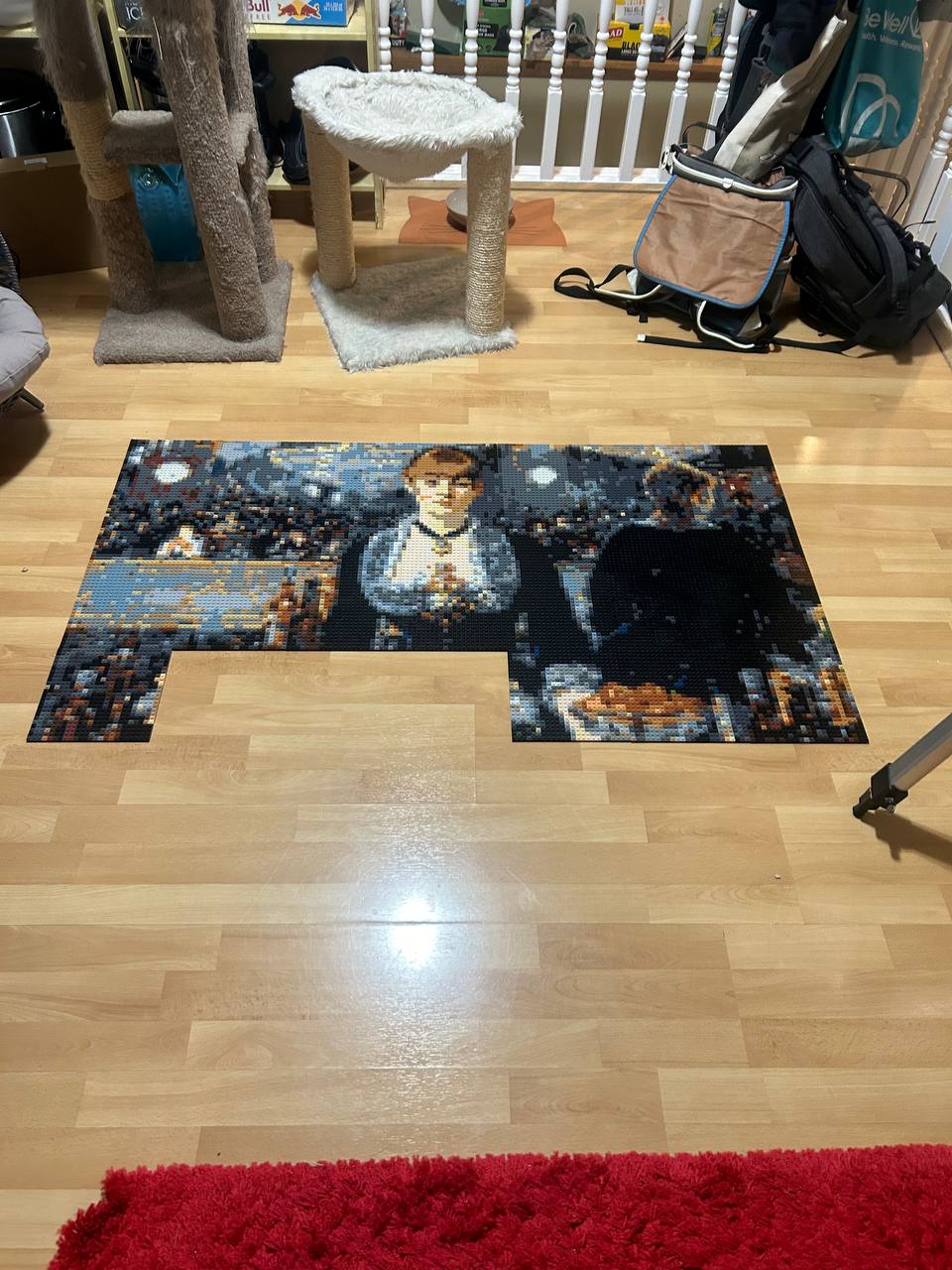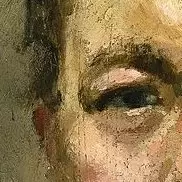A Bar at the Folies-Bergère (French: Un bar aux Folies Bergère) is a painting by Édouard Manet, considered to be his last major work. It was painted in 1882 and exhibited at the Paris Salon of that year. It depicts a scene in the Folies Bergère nightclub in Paris. The painting originally belonged to the composer Emmanuel Chabrier, a close friend of Manet, and hung over his piano. It is now in the Courtauld Gallery in London.
https://en.wikipedia.org/wiki/A_Bar_at_the_Folies-Bergère
Édouard Manet (23 January 1832 – 30 April 1883) was a French modernist painter. He was one of the first 19th-century artists to paint modern life, as well as a pivotal figure in the transition from Realism to Impressionism.
I kid you not: My wife is making this in Lego. I showed her this post, and “Oh that makes me so happy!”
Wow, that’s super ambitious (to me, a non Lego expert). Feel free to share a pic here if that’s cool.

Oh snap, that’s amazing. Well done!
I love that painting so much
That painting is gorgeous. Captures a place and time like a dream and a photograph rolled into one.
On the one hand, it looks like there a mirror behind her, the clientele being reflected. But then that couple in diagonal from our point of view messes with that illusion, more so because the woman shown from behind is wearing the same dress, or at least similar cut but identical color, and hair.
Yah.
At the time of its unveiling, A Bar at the Folies-Bergère was immediately critiqued for its startling and distinctive perspective. While at first glance it may appear that there is a crowd behind the barmaid, it is actually the reflection of a mirror. So, the back of a blonde woman leaning over a counter we see behind the main figure is in fact her reflection. So, as the viewer, we are placed in the position of the man talking to her. However, the details in the foreground and those in the mirror don’t exactly match up—leading many of Manet’s contemporaries to accuse him of making a mistake.
Today, art historians have different theories as to why the perspective in the painting appears skewed. Some believe it is an intentional “error” to show the two different experiences of the barmaid, where she is withdrawn in one point of view and leaning attentively towards the gentleman in the other. Or, the duality of the composition could be hinting at the figure’s double-life as a barmaid and sex worker.
From https://mymodernmet.com/edouard-manet-bar-folies-bergere-painting/

